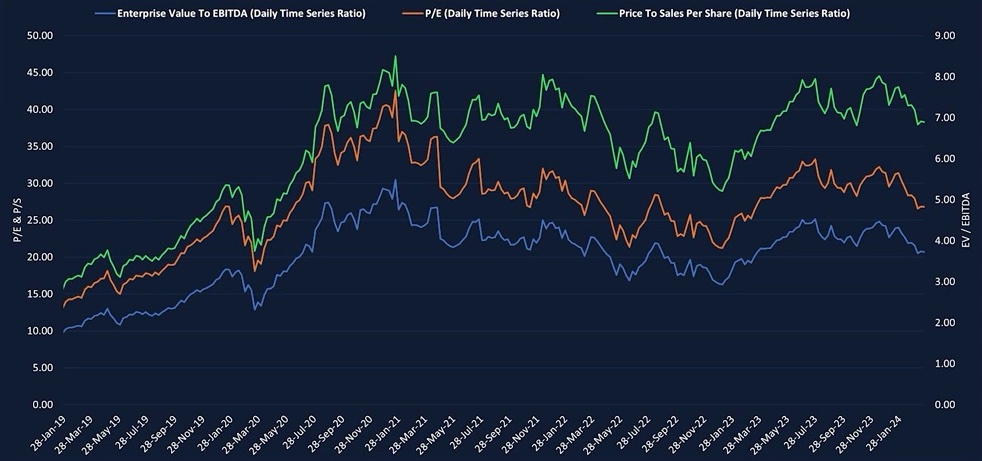
I’ve got a great idea for you. Let’s set the scene and provide some background. Last week, on March 21st, the US Justice Department announced legal action against Apple for allegedly violating antitrust laws related to monopolizing the iPhone ecosystem.
Interestingly, the market didn’t react much and seems to still value the company as if nothing much has changed in the tech industry landscape. Regulators in major markets have been actively curbing the power of tech giants. For instance, the European Union fined up to €1.8 billion for favoring its music streaming competitor, Spotify, on the App Store.
They’ve also introduced a new law to reduce the control digital platforms have in the US. Federal and state regulators are suing Google, Amazon, and Apple, investigating whether their investments stifle competition. Additionally, agencies in Asia have launched antitrust probes and are implementing new regulations.
So, the market doesn’t seem too worried about antitrust actions, as historically, big tech companies have been adept at outmaneuvering regulators. One challenge is that current US antitrust laws were written for simpler times when assessing companies, customers, and competitors was easier. Actions like dumping and price fixing were simpler to prove.
Today’s antitrust regulators need to craft new legal theories to fit with outdated legislation in a digital age. It’s tough when issues revolve around controlling consumer data for competitive advantages and favoring tech companies’ products on their platforms. So far, convincing US judges of antitrust behavior has been tricky.
Until recently, US legal philosophy, backed by decades of case law, generally favored tech companies. Antitrust laws were mainly applied to ensure fair prices rather than fair competition. Tech platforms offer their services for free or at low cost, enhancing consumer welfare with more choice, lower prices, and convenience.
Recently, antitrust regulators are changing their approach, arguing that tech giants use their control over digital infrastructure to stifle competitors. They claim the attractive pricing of these giants amounts to predatory pricing aimed at growth over profits. Their goal is to protect competition and consumer welfare.
Federal regulators failed to block Microsoft’s acquisition of a video game firm and Meta’s purchase of a virtual reality startup. They also dismissed a lawsuit seeking to force Meta to divest WhatsApp and Instagram.
European authorities have had more success regulating tech than their US counterparts. They recently introduced a Digital Markets Act, requiring digital gatekeepers to open their platforms to rival services. For instance, Apple must allow alternative app stores on iPhones, and Microsoft has to make Windows compatible with competitor applications.
Unlike traditional industries with slow growth and rigid market share, the tech industry leverages its incumbency to suppress competition. Regulators are expected to demand behavioral changes rather than structural ones.
Politicians and regulators aim to rein in big tech, but rather than sudden rules, antitrust actions will likely be gradual. This raises concerns about Apple, whose stock has underperformed due to revenue contraction, slowing growth, and lack of innovation.



A trade idea is to short Apple, betting on continued underperformance. Despite recent declines, the stock still trades at a premium. An inexpensive trade structure allows for potential profit if there’s a tech pullback or increased regulatory scrutiny.
The trade involves a calendar spread with long September 20th, 165 strike puts and short April 20th, 165 strike puts. The goal is to generate credits along the way and set up another short leg after the earnings report in May.












